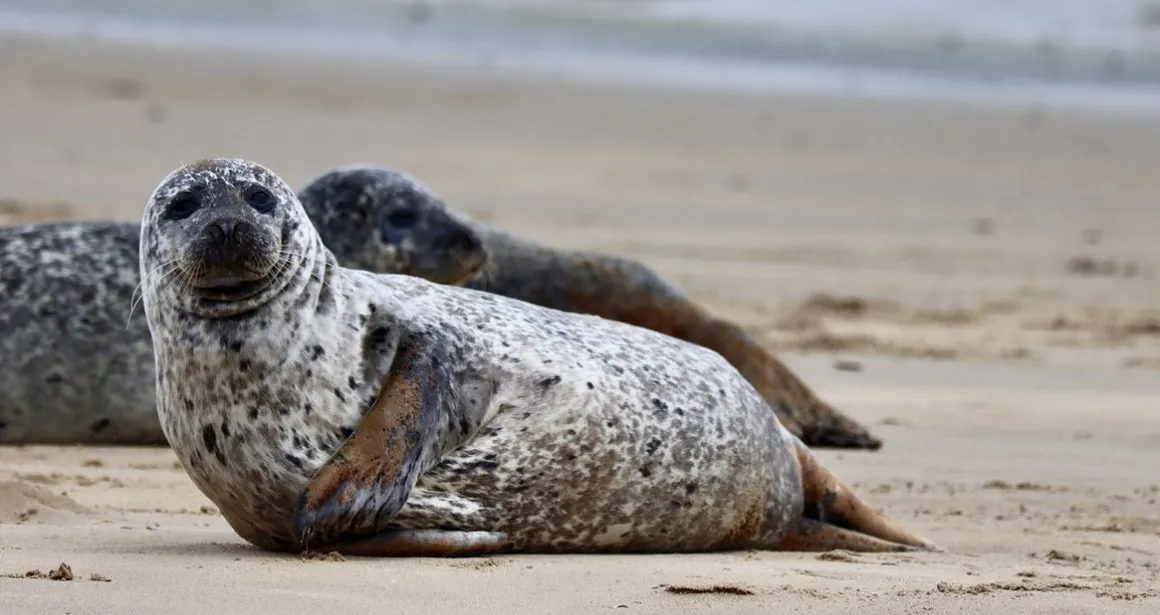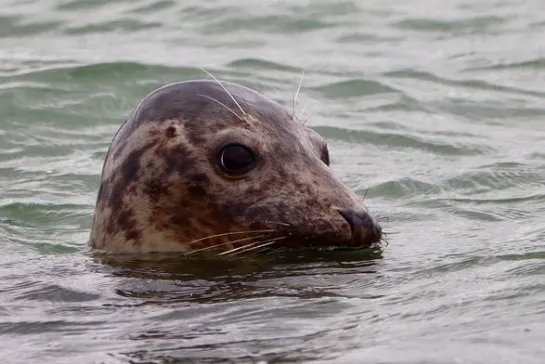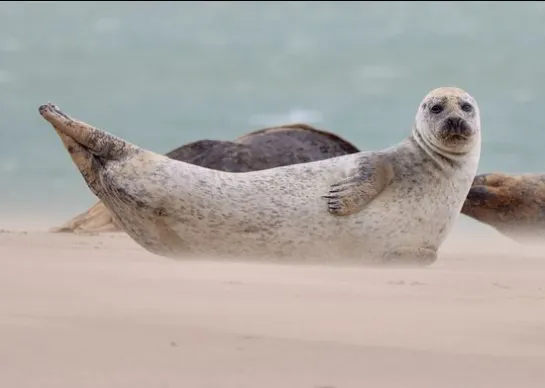Biodiversity 5mn
Grey seal or common seal: how to recognise the seals on the Opal Coast
To observe the seals on the Opal Coast, it’s better if you know how to make the distinction between grey seals and common seals!

It’s highly likely that during your stay on the Opal Coast you’ll see a seal lazing on the beach at Berck or in Somme Bay, or that you’ll catch a glimpse of a head sticking out of the sea.
But is that seal a grey seal or a common seal? Here are few clues for distinguishing between them and some tips for observing them!
Who are they?
The grey seal Halichoerus grypus and the common seal Phoca vitulina, also called the harbour seal, both belong to the pinniped family.
They are carnivorous mammals whose diet is similar, based on fish and cephalopods. Classified of Least Concern by the IUCN, the worldwide populations of each of these two species is estimated to stand at a bit more than 632,000 individuals for the grey seal and 640,000 for the common seal.
They live at depths of between 3 m and 412 m for the grey seal and 480 m for the common seal.
Where can you see them?
You can come across them on the Opal Coast resting on the sandbanks at low tide, and it’s in the Somme Bay that you’ll see the biggest colony of common seals in France. Seals are now present all along the coast between Somme Bay, Authie Bay and Canche Bay, in Boulogne-sur-Mer harbour, and also to the north of Calais and in the Dunkirk area.
Seals are a protected species, and you can be fined if you disturb them intentionally.
Did you know? While they’re resting on the sand, seals make the most of the sunshine to synthesize their reserves of blubber, a natural insulant that allows them to live in very cold water in winter.
So, get out your binoculars if you want to get a good sighting!
Seal or sea lion?
Seals must not be confused with sea lions: the latter have external ears, with rolled-up flaps and use their flippers to move, unlike seals which galumph along on their bellies. The marine mammals at Nausicaá are California sea lions which you can see in the Mankind and Shores exhibition.
What’s the difference between grey seals and common seals?
So as not to confuse them, here are some distinctive signs that will help you to recognise the seals on our coastline, whether they’re in the water or on the sandbanks. By looking at their head, nostrils and fur, you’ll be able to see the differences that will allow you to distinguish between the two.
The grey seal
The grey seal’s head is easily recognisable thanks to its straight profile which reminds you of a horse’s head with a longer neck than the common seal. Another distinctive sign: the two nostrils are parallel.
Unlike the common seal, they don’t have ears, just a hole towards the back of their heads.
If you look at their fur, you’ll be able to distinguish between the males and the females. The male’s fur is dark grey with lighter spots. The female’s fur however is light with dark spots. Young grey seals are white with very long fur that prevents them from entering the water. You can see them close to their mothers in December and January.

The common or harbour seal
The common seal can be recognised by its rounder head, with an indentation between the forehead and the snout, and its nostrils form a V-shape.
Their fur can be light grey with darker spots. Others have uniformly beige fur. The common seal is usually smaller than the grey seal.
In June to August, you can see the young which have the same fur as the adults, and can swim right from birth.

Eleven tips for watching seals in complete safety
Now that you know how to distinguish between these two species of pinnipeds when you take a walk along the Opal Coast, here are a few words of advice to help you observe seals in complete safety while ensuring their peace and quiet.
- Respect the animals and their habitat.
- Respect the seals’ flight distance which is 300 m. If you get closer than that, they will probably flee.
- Stay grouped together: the seals will be less frightened of a tight group of people.
- Have no more than ten people in your group.
- Keep quiet, too much noise will frighten the seals, who have very sensitive hearing.
- Walk slowly as you approach the seals, pausing regularly so they can get used to your presence.
- Pay attention to the wind! Seals have a very well-developed sense of smell. Move forwards walking into the wind.
- Check the tide times, some beaches can be dangerous when the tide rises.
- Check the weather forecast before setting out to avoid getting any unpleasant surprises on the spot.
- Take a mobile phone with you so you can call the emergency services if necessary.
- Take a good pair of binoculars with you or a telescope on a tripod.
What should you do if you come across a sea mammal on the beach?
If, by chance, you come across a seal stranded on the beach, it may be an animal in good health or perhaps it is sick or injured, immediately notify UMS PELAGIS on 05 46 44 99 10 (7 days a week) indicating where you saw it.
A correspondent from the RNE (National Stranding Network) will come to assess the situation.
This contact is valid for all observations of sea mammals (seals, dolphins, etc.), whether alive or dead.
Conservation initiative
Nausicaa supports the CMNF, the Mammal Coordination for the North of France association, which works in the field to promote research and raise public awareness regarding the protection of wild mammals in our region.